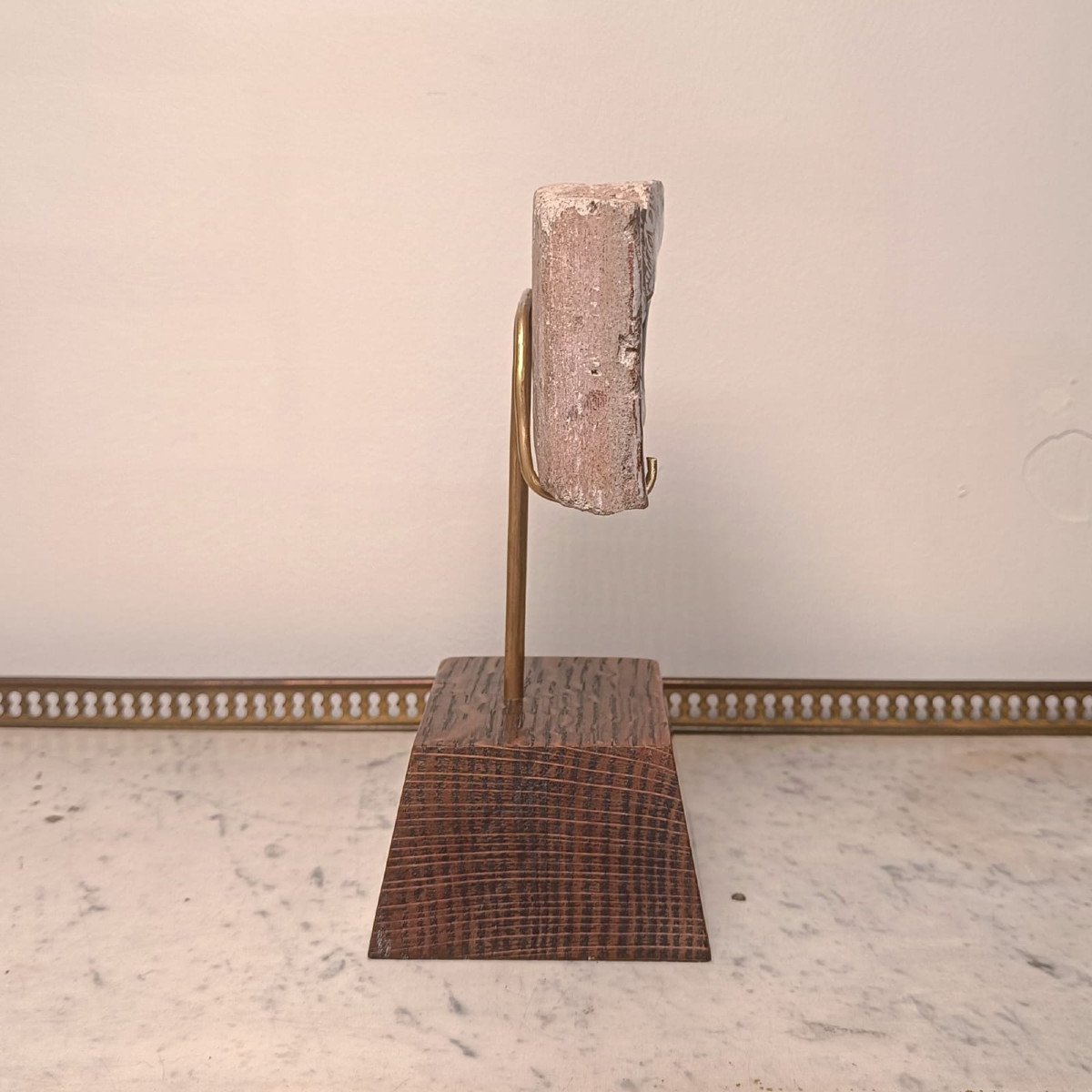Fragment of Ilkhanid covering tile (Mongol Iran, 1256-1335)
Standing figure in relief on a background of plant motifs and interlacing made with metallic luster with cobalt blue highlights.
Glazed siliceous paste
Provenance: probably Takht-e Sulayman
Dimensions: 8.5 x 6.5 x 2.5 cm
Dimensions with base: 18 x 9.5 x 8 cm
Condition report: fragmentary excavation piece, glaze in very good condition with bright colors
Led by Genghis Khan, the Mongols swept over the Islamic world and its empire was divided between his 4 grandsons, with the Khan of China above the others. Houlagou Khan thus founded the Ilkhanate of Persia in Iran. In Ilkhanid art, we can see the use of earlier local techniques (such as metallic luster) with a significant Chinese contribution. These tribes, initially shamanists and Buddhists, ended up converting to Islam in 1290.
Takht-e Sulayman is a Zoroastrian site in northwestern Iran reused by the Mongols (a way of ensuring historical continuity and legitimizing their power). The iconography of the siliceous paste covering tiles with metallic luster decoration from Takht-e Sulayman is particular: it is linked to the pre-Islamic history of Iran, and is imbued with Chinese themes such as the dragon or the phoenix which are symbols of imperial power. The entire repertoire is linked to a desire for political legitimation: legitimation vis-à-vis the Chinese Great Khans and legitimation vis-à-vis the local populations.
Our example can, for example, be stylistically compared to a tile preserved by the Victoria and Albert Museum (no. 1841-1876) representing Bahram Gur hunting, and discovered at Takht-e Sulayman.










































 Le Magazine de PROANTIC
Le Magazine de PROANTIC TRÉSORS Magazine
TRÉSORS Magazine Rivista Artiquariato
Rivista Artiquariato